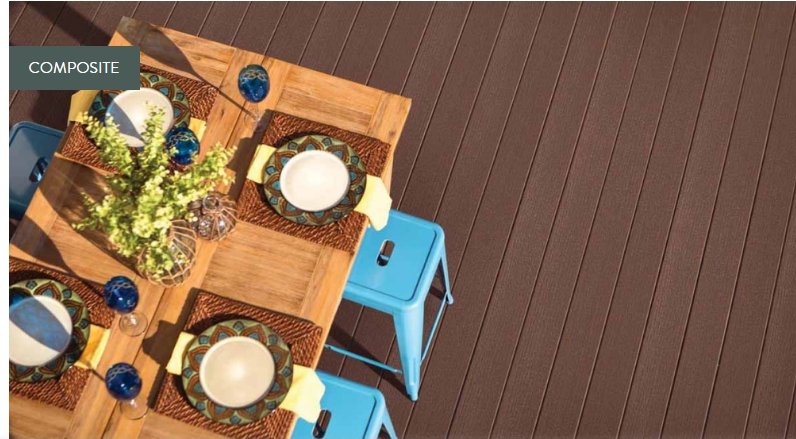Decking - Composite or Advanced PVC
Composite decking and advanced PVC decking are two popular materials for building decks.
Each offers unique benefits and characteristics.
Here's a comparison to help you understand the differences between the two:
Composite Decking
Composition:
Materials: Made from a blend of wood fibers (wood flour) and recycled plastic (typically polyethylene or polypropylene).
Core: Often has a solid or hollow core, depending on the manufacturer and specific product.
Appearance:
Wood-Like Look: Designed to mimic the look of natural wood, available in a variety of colors and grain patterns.
Texture: Can have a realistic wood grain texture or a smooth finish.
Durability:
Weather Resistance: Resistant to weather, rot, and insects, but may be prone to mold and mildew if not properly maintained.
Fade and Stain Resistance: Generally resistant to fading and staining, but performance can vary by brand and product line.
Maintenance:
Low Maintenance: Requires less maintenance than wood; typically needs periodic cleaning with soap and water.
Potential Issues: Can scratch and stain more easily than PVC; may require more effort to maintain appearance over time.
Cost:
Mid-Range: Typically more expensive than wood but less expensive than advanced PVC decking.
Advanced PVC Decking
Composition:
Materials: Made entirely from polyvinyl chloride (PVC), a type of plastic, without any wood fibers.
Core: Usually has a cellular (foam) core or a solid core for added strength and durability.
Appearance:
Variety of Designs: Available in a wide range of colors and styles, some of which can mimic the look of wood.
Consistent Color: Color is consistent throughout the board, reducing the visibility of scratches and dents.
Durability:
Superior Weather Resistance: Extremely resistant to weather, moisture, rot, and insects.
Fade and Stain Resistance: Highly resistant to fading, staining, scratching, and mildew.
Maintenance:
Ultra Low Maintenance: Requires minimal maintenance; typically just needs occasional cleaning with soap and water.
Durability: Does not require sealing, staining, or painting, and retains its appearance over time with little effort.
Cost:
Higher-End: Generally more expensive than both wood and composite decking due to its durability and low maintenance needs.
Summary of Key Differences
Composition: Composite decking is a blend of wood fibers and plastic, while advanced PVC decking is made entirely of PVC.
Appearance: Both can mimic wood, but PVC tends to have a more consistent color and texture.
Durability: PVC decking is generally more durable and resistant to environmental factors than composite decking.
Maintenance: PVC requires less maintenance than composite, which can be more susceptible to scratching and staining.
Cost: PVC decking is typically more expensive than composite decking.
Both composite and advanced PVC decking are excellent choices for building a durable, attractive, and low-maintenance deck.
The best choice for you will depend on your specific needs, budget, and aesthetic preferences.




